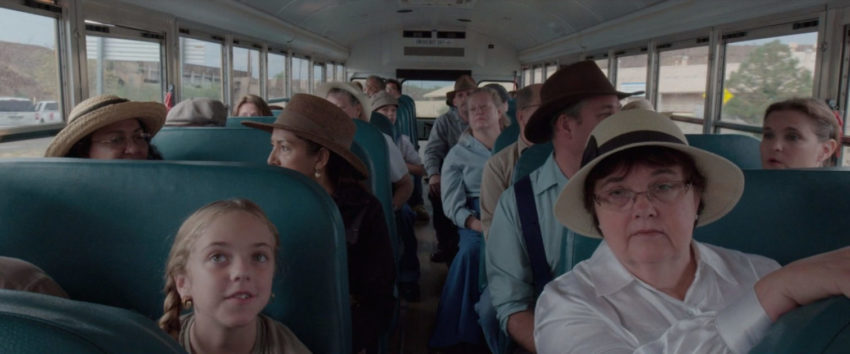
Over the past several months, a peculiar category of personal essay cropped up all over the media landscape: the first-hand narrative of what it feels like to be ill with COVID-19. Although reported pieces about those suffering from COVID-19 and its long term effects also proliferate, the essays I’m thinking of are works of creative nonfiction. I should say upfront that I’m not necessarily a fan of the “pandemic personal essay” as a genre; however, these primary accounts of illness became a sort of exception to the rule.
The authors of these pieces seem more concerned with describing experience than analyzing it. The best of these works possess an immediacy that provokes a visceral reaction by asking the reader to imagine the physical reality of sickness. Envisioning this can be upsetting, which may be why some of these essays lodged themselves in my memory. In late March, reading Jessica Lustig’s piece about taking care of her husband when he was sick with coronavirus triggered my first real anxiety spiral of the pandemic. A small detail about keeping the cat out of the bedroom where the author’s husband lay confined sent me spinning; I obsessed over the heartbreaking thought of keeping one of my cats who is desperately attached to my husband away from him if he fell ill with the virus. Krista Diamond’s reflection about losing her sense of taste after contracting COVID-19 left me unbearably sad. I, too, have been relying on the small joys of food to get through this weird and awful year, and the notion of losing my sense of taste, as Diamond did, filled me with dread. Last month, Patricia Lockwood wrote a fevered “Diary” entry for The London Review of Books about the deleterious effects of a coronavirus infection on her mental state. Lockwood recounts her delusions and delirium with an almost shocking frankness, even if the essay ends on an ostensibly positive note.
Sure, these stories scared me, but, more than anything else, they moved me. These chronicles of sickness struck me differently than other pandemic personal essays—the ruminations on the nature of time in lockdown or the contemplations of the joys of baking bread—because they spark with a sense of urgency. These works ask readers to try to understand what the state of illness feels like on a subjective level. “What if I were sick?” “What if someone I loved were sick?” “How would I feel?” “What would I do?” I saw these essays as pleas for empathy in the face of a largely unempathetic national response to the pandemic.
In the midst of a concerted partisan effort to discourage any empathetic reaction to the situation, how does one provoke empathy in one’s fellow Americans? I’m consumed by this question as I read the news, watch case counts rise in places where my loved ones live, observe extended family members post disinformation on Facebook about the efficacy and safety of wearing masks, see the statistics on how the virus has disproportionately affected non-white and poor communities, and see how this reality only helps comfortable, white people “other” the problem of the pandemic. Obviously, I don’t want everyone in the country to know someone who has contracted COVID-19; it shouldn’t take that kind of experience and that magnitude of potential suffering for us to collectively understand the importance of keeping each other safe. As humans, we should be capable of an empathetic recognition of others’ suffering. To be empathetic is to understand another’s feelings as if we were having them ourselves; therefore, empathy is always an imaginative, interpretive act.* But what sets off our empathetic imaginations?
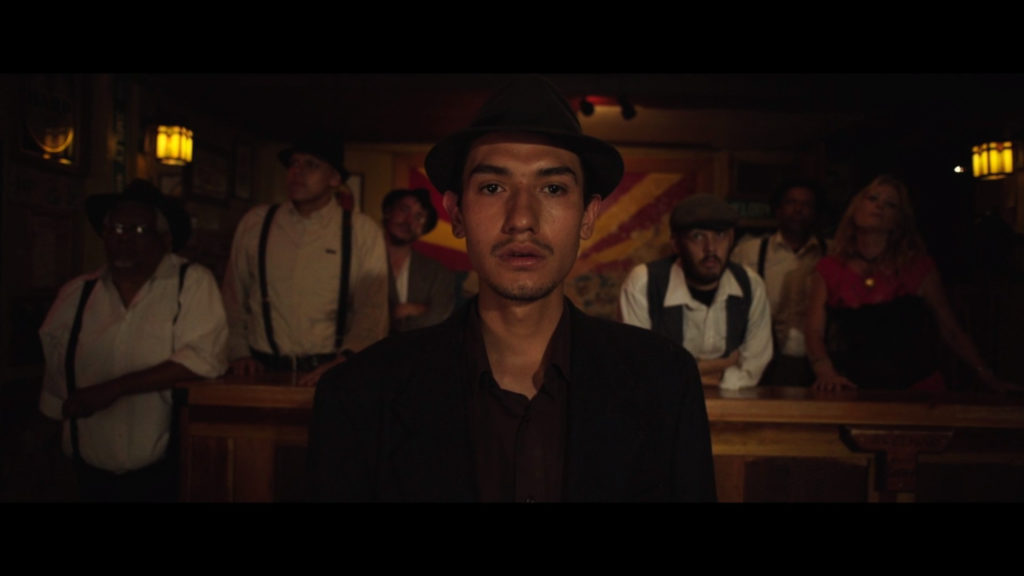
I was already thinking about ways to generate empathy when I sat down to watch Bisbee ‘17 (2018), director Robert Greene’s third feature-length documentary film, for the first time last month. The film follows a handful of residents of Bisbee, Arizona, as they plan a centennial reenactment of the so-called Bisbee Deportation of 1917. As is the case with Greene’s other work, Bisbee ‘17 explicitly investigates the porous boundary between fiction and nonfiction, as well as the line between acting and being. The reenactment forms the backbone of the project. Most of the activity shown on camera relates to planning and executing the reenactment, and filmed, reenacted scenes make up a considerable portion of the movie’s runtime. Greene intersperses the “real” scenes with the reenacted scenes indiscriminately and with little delineation, to slightly disorienting effect.
While labor historians and historians who study the Mexico-United States border are generally well acquainted with the event, Greene’s film presents the Deportation as a sort of tacitly suppressed history among those who live in Bisbee. In 1917, local law enforcement, at the behest of the copper mine owners, kidnapped suspected participants in a planned labor strike supported by the Industrial Workers of the World (IWW). Mexican and Eastern European immigrants made up the majority of the strikers, who had organized the action to demand equal pay and better working conditions in the copper mines. The sheriff recruited a large posse of locals, mostly white men, to apprehend nearly two thousand striking miners and community members who supported the miners’ cause. After rounding up the labor activists, the sheriff and his crew loaded the strike supporters into cattle cars and sent them east to the New Mexican desert, where they were left to fend for themselves.**
Some residents of present-day Bisbee, the Bisbee of 2017 that Greene visits, are descendants of those who rounded up the striking miners. Since almost none of the deportees ever returned to Bisbee, no descendents of the victims of the Deportation live in the town. Greene’s film suggests that those who participated in enacting the Deportation—those who stayed in Bisbee and whose children stayed in Bisbee—perhaps had complicated feelings about the action and therefore did not want to discuss it or remember it. The centennial reenactment is thus positioned in the film as a sort of catharsis, a way for the residents of the town to relive this potentially painful incident in history and face it in a new way.
In a book chapter on the rise of reenactment as a form of historical study in the 1970s, historian M.J. Rymsza-Pawloska writes about the ways that historical reenactments enable participants to identify with historical subjects in affective ways.*** She refers to reenactments as “embodied history” and “experiential history,” and both terms point usefully to the ways that participants relate to historical reenactments. Essentially, historical reenactment gives participants unique insights into historical subjects by setting up the conditions to foster empathy across time. By reliving historical events and embodying historical persons, participants begin to develop a new sense of historical consciousness on the emotional level; this helps participants make connections between the past and the present in interesting and sometimes surprising ways. The framework outlined by Rymsza-Pawloska allows us to see historical reenactments as one form of practicing embodied empathy.
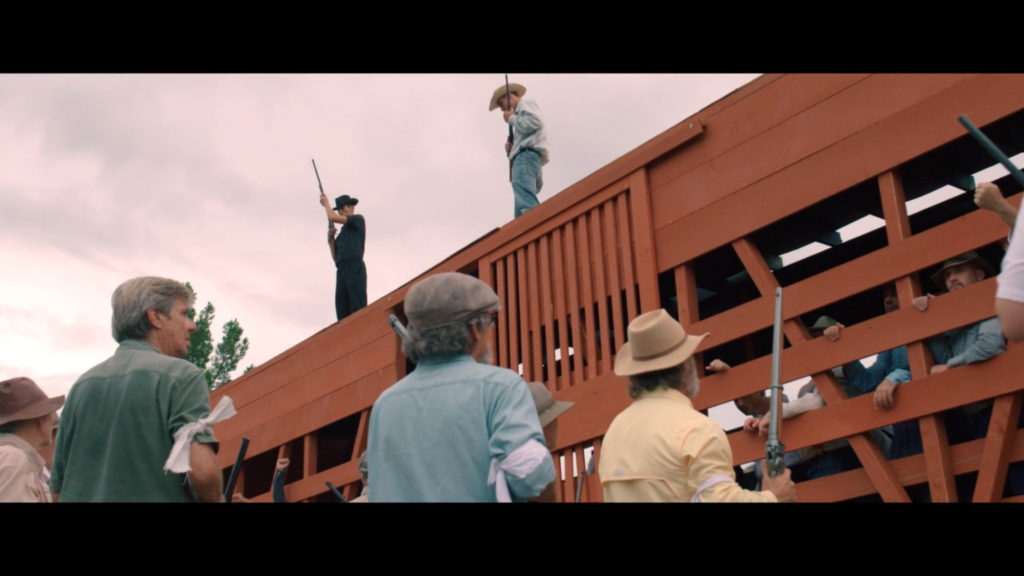
Bisbee ‘17 documents how walking in the shoes of the 1917 deporters and the deportees allows participants in the reenactment to form new understandings of the Deportation one hundred years later. Some participants end up identifying even more closely with the figure they are tasked with playing; after the reenactment, a man who portrays one of the mine owners who set the Deportation in motion seems firmer in his belief that the Deportation was a justified, necessary action. One young man, a Mexican-American non-actor and resident of Bisbee named Fernando, takes a role as one of the striking miners. Fernando, who knew nothing about the Bisbee Deportation until participating in the film, finds meaningful resonances between the events of 1917 and his own life as he performs in the reenactment project. But some participants find their beliefs challenged over the course of the reenactment. In a stunning moment, one reenactor breaks character (as a member of the Sheriff’s posse) to say to the camera, “This feels wrong,” after herding the reenactors playing captured labor activists into a cattle car. This man previously expressed stronger sympathy with the law enforcement side of the Deportation, characterizing the group as well-meaning, patriotic citizens doing their duty.
Greene’s film makes a compelling case for the power of reenactment to engender experiences of empathy through embodied action. Although Bisbee ‘17 cannot be classified as didactic, this thematic throughline is fairly straightforward; the participants themselves verbally express what they’re feeling. Bryan Fuller’s Hannibal, by contrast, uses visual language to articulate and play with the close, instinctual relationship in our imaginations between reenactment and empathy. In Hannibal, the protagonist’s almost supernatural gift of “pure empathy” manifests on-screen as reenactment.
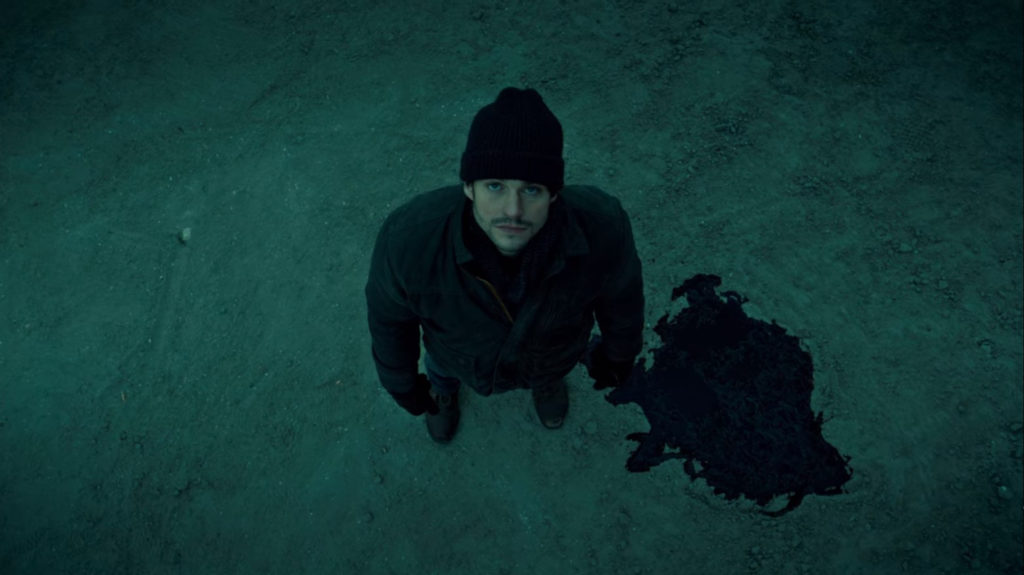
Will Graham (Hugh Dancy), the FBI criminal profiler who serves as one of the show’s two leads (the other lead being, of course, Hannibal Lecter, played here by a perfect Mads Mikkelsen), can catch serial killers by precisely recreating their thinking. Graham arrives at a crime scene, surveys the evidence, and slips into the mind of the killer to reconstruct the murder. The show—as well as the novel it’s based upon—describe this ability as a kind of extraordinary empathy, since Graham catches killers by identifying with them so closely that he can divine their motivations and predict their moves.
When Hannibal depicts Graham retroactively piecing together a series of events at a crime scene, the murders are shown as reenactments. Rather than show the murderer acting out the process Graham describes, like a flashback of sorts, the camera shows Graham himself going through the violent motions. As Graham describes what happened at the crime scene, he also assumes the voice of the killer, using the first person “I” to refer to the murderer.
It’s notable that Graham must go back to the scene of the crime to reconstruct it. He gains insight into the crime by seeing the evidence, but it seems important to his process that his body be where the killer’s body was. The significance of his being at the crime scene suggests that Graham is practicing embodied empathy by putting his body in the same conditions as the killer’s. He can only truly reenact the killing in his mind, but the way these scenes are filmed takes us into Graham’s psyche, where we see him “commit” the murders—making these reenactments “real” for the viewer.
As a way of visually communicating Graham’s powers of empathy, the reenactments are extremely effective. The show takes advantage of the audience’s deep-rooted sense of the link between walking in someone else’s shoes and the work of being empathetic; the images of Graham reenacting gruesome murders stand in clearly and plainly for his empathizing with killers. The reenactment scenes function thematically, as well. The show presents Graham’s extreme empathy, especially used to empathize with psychopaths as he does in service of the FBI, as something unbearable. The reenactments make explicit the implication of what it means for Graham to imagine himself as a murderer, and they lay bare for us what repeatedly and closely empathizing with serial killers does to Graham’s mental state. If he keeps imagining himself as a serial killer, how long will it be until he becomes one?
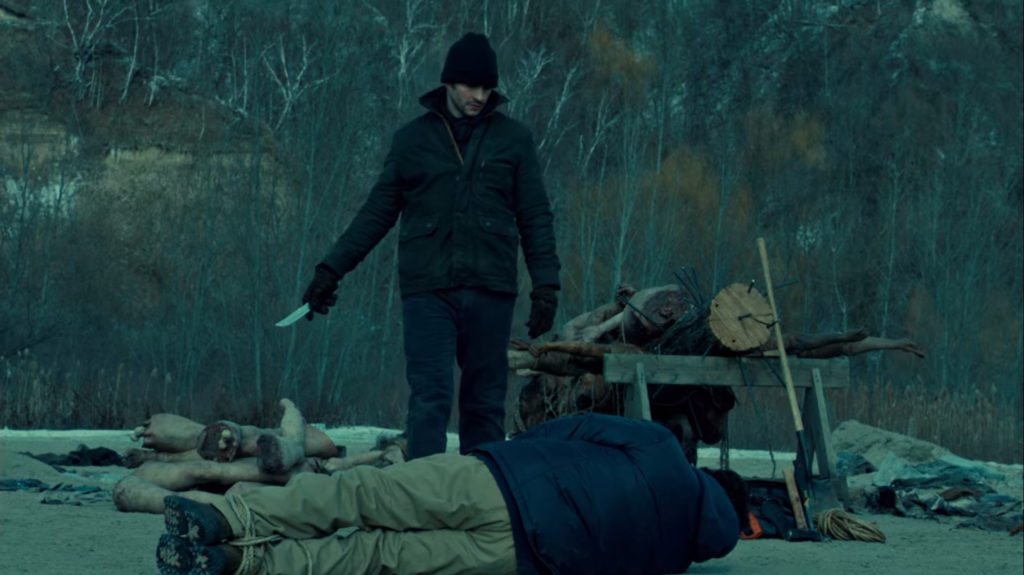
Bisbee ‘17 and Hannibal stand out for how they illustrate the potency and sometime unpleasantness of practicing embodied empathy. Locating feelings in the body and trying to understand others by putting or imagining our bodies in the same state as theirs is hard work. It’s vulnerable work. It’s scary work, particularly when one is trying to empathize with someone going through something disturbing. But it’s worthwhile work.
As confirmed COVID-19 cases rise to record high levels in the U.S. this week, I’ve been thinking about the utility of embodied empathy as a way to foster greater levels of compassion. Illness is primarily a physical ordeal. Confinement and quarantine are physical conditions. Working from home is a physical circumstance. Much of so many people’s understanding of the severity of the pandemic is bound up in whether their own physical states have been affected by it. Could practices of embodied empathy, then, be a fruitful place to start when thinking about cultivating more empathy in our pandemic response?
For me, the answer is yes. Isolated in my own apartment, both my spouse and I so far uninfected and still employed, I’m constantly tempted to ignore what’s going on—to think of no body but my own healthy, housed, and fed body. The personal essays detailing the physical reality of COVID-19 infection are ultimately so forceful for me because they ask me to empathize by requiring me to picture myself in the author’s physical state. They demand that I think about all of the suffering bodies I am so eager to ignore.
Absorbing these essays can be distressing, admittedly. Reading things like coronavirus personal essays, long Twitter threads from “recovered” COVID-19 patients suffering from long-haul symptoms, news stories about mass evictions, and the rest can feel like torturing myself over something I can’t control. Seeing these things as tools for practicing embodied empathy, however, changes the frame. They aren’t scare tactics to be ignored for my own self-preservation, but rather they serve as a critically necessary impetus to look outward—outside of my own body—and find empathy for those who are most adversely affected by the pandemic. From viscerally elicited empathy, positive action can spring.
While practicing embodied empathy can certainly be uncomfortable (as suggested by Bisbee ‘17), even horrifying (as posited by Hannibal), in both Greene’s film and Fuller’s show (at least for the first season), positive action does come from the understanding gained through the practice. Bisbee ‘17 implies that the reenactment of the Deportation might initiate a process of exorcising the town’s ghosts; emotionally engaging with history allows the participants to productively face the town’s violent past and begin to look towards the future. In Hannibal, Graham uses his unique talent to catch serial killers before they strike again. He saves innocent lives.
Perhaps we should cultivate an openness in ourselves, if we can, to practices of embodied empathy and challenge the people in our lives to do the same. Where appeals to logic and reason fail, maybe appeals to the body could prevail. We’re all human. We all have bodies. If we could all be pushed to imagine the experiences of bodies that are not our own, maybe we could collectively conceive of a more empathetic response to the pandemic.
*I would like to note here that real empathy requires a radical openness and a willingness to listen; to be empathetic is to take on another’s feelings as if they were our own, but it is not to project what we think another person’s feelings or experiences might be. Empathy must be based on information and evidence received from the person with whom one empathizes.
**The film implies that the men were left for dead in the desert; however, this is not exactly accurate. While the workers were deserted in a tiny New Mexican town with no provisions, New Mexican officials and the U.S. Army located the party, escorted the deported men to a larger town, and provided them with food and water. Some sources claim that the deportees were deliberately left in close proximity to a U.S. Army base, and evidence suggests that the deportees were meant to be found. For greater context, see Johnson’s introduction to The American Historical Review’s special roundtable on the film (Benjamin H. Johnson, “Introduction,” The American Historical Review, Volume 124, Issue 3, June 2019, pp. 955–958, https://doi.org/10.1093/ahr/rhz590).
***M. J. Rymsza-Pawlowska, “Cultural Logics of Reenactment: Embodied Engagements with the American Past,” in History Comes Alive: Public History and Popular Culture in the 1970s (The University of North Carolina Press, 2017), pp. 118-138.